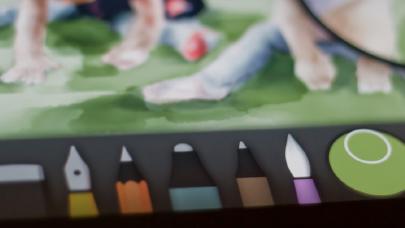Contour line drawing on iPad

One of the first things I drew on my iPad with Paper by FiftyThree was a blind contour line drawing. It has always been an interest of mine and Paper’s expressive ink tools are a great fit for the technique.
Drawing contour lines
Working in a loose and gestural manner is an excellent way to warm-up and sharpen your observation skills. I like to draw with the fountain pen (draw) because it has a greater range than some of the other tools, but feel free to use the ink pen (write) or even the pencil. I think you’ll find this exercise to be very cathartic, especially when compared against the technical and time consuming nature of photo realistic drawing.
The ideal way to practice this technique is by drawing a real object (hands are good to start with) — avoiding photographs if you can. To begin, fix your eyes on the subject in front of you. As your eyes track across the subject’s shape, draw a slow continuous line in sync with what you are viewing.
Getting sensitive
Pay close attention to how the form’s contour and shape relate to each other making sure to keep your stylus or finger firmly placed on the iPad’s screen at all times. The line should remain solid and confident, this isn’t an exercise in sketching or shading.
When you observe a shadow or a dark division, move your stylus faster to produce a thicker line. For highlights and lighter areas move slowly to draw a thinner line.
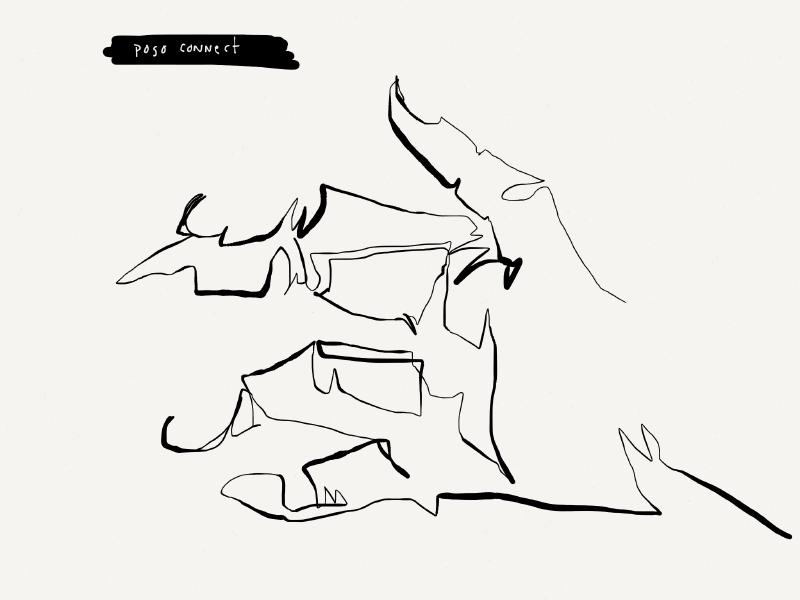
I find drawing with a Pogo Connect allows for greater control over the line’s weight.
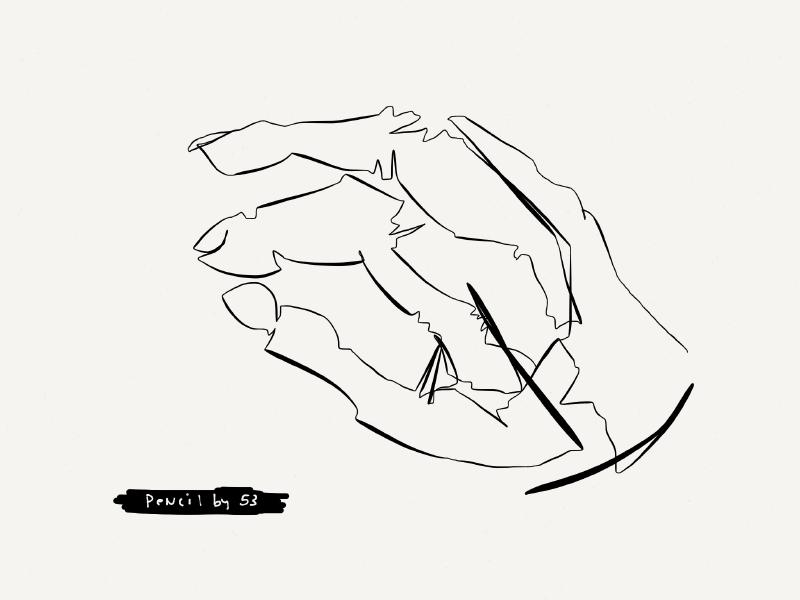
Producing sensitive lines becomes infinitely easier with a Pogo Connect since you can varying their thickness by pressing harder. This added complexity isn’t for everyone, but for someone with a background in the fine arts or illustration, it can feel more natural.
I also find that it helps to think of this line as a piece of string — pretending that I’m wrapping it around the object as I follow along with my stylus. Don’t worry if your drawing ends up looking like a ball of yarn — that’s part of the charm. As the link between hand and eye builds, so will the accuracy of your lines.
Variations and enhancements
There’s a world of possibilities to explore with this technique. For example, you can stick with black ink on white paper and add splashes of color with the brush tool, emulate a scratch board drawing, or layer multiple lines on top of each other.
A splash of color
When applying color to a contour line drawing start by looking for the shadows in your subject and brush those in first. If you work from the outside edge in, it is easier to fade your strokes using a sweeping motion. When done right this feathering of color can mimic the wet on wet look of traditional watercolors.
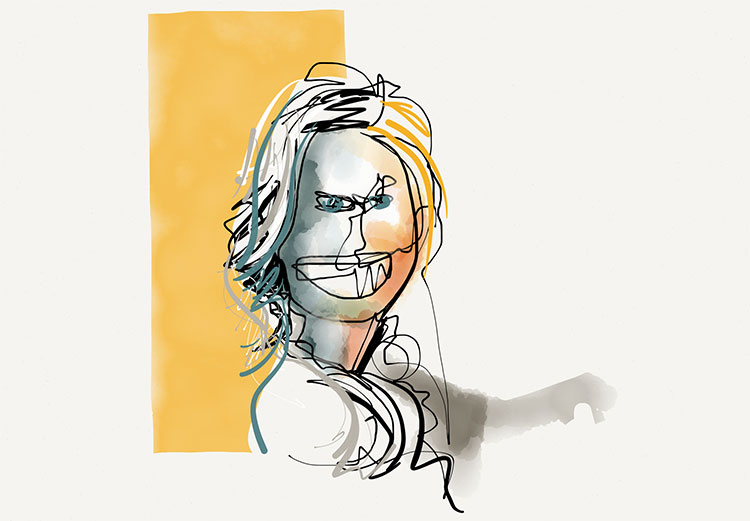
If you’re feeling overwhelmed by color, try working with just black and white. Limiting the selection simplifies the process and causes you to focus more on contour and line quality before tackling advanced color theory principles. I experienced the most learning by being limited to the 9 colors Paper originally shipped with. This led to many hours of mistakes and experimentation, ending with a higher understanding of how the tools and colors behaved.
White on black
Another variation to try is drawing in white ink over a black background. To start you would select black from the palette and then drag it onto the canvas to fill it in. This color inversion gives the lines new qualities that closely resemble scratch board drawings.
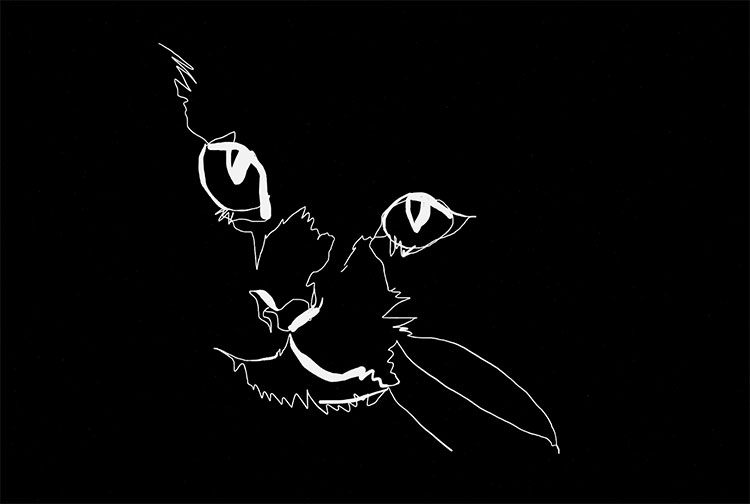
Adding lines
There is no hard fast rule that says the drawing has to be made up of a single line. Breaking it up into multiple lines, made up of different colors and values can produce nice results. Just be mindful of the lines’ starts and stops when switching tools or colors, you don’t want to kill the free form nature of the drawing.
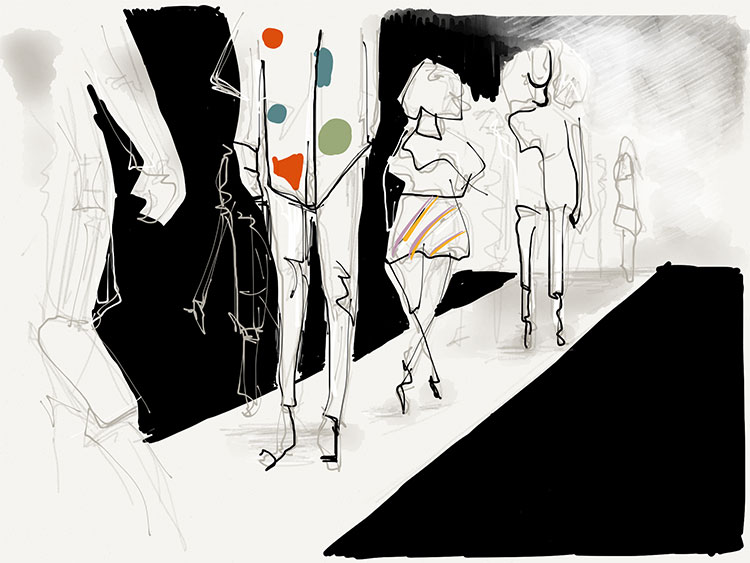
If you end up trying out this technique I’d love to see what you’ve created. Leave a link or attach an image of your work below in the comments.
11 mentions

Guess it depends on what you want to get out of the exercise. If you want to develop your hand eye coordination than doing them blind, never looking down, and completing the drawing in one line is the preferred method.
I like the look of contour line drawings so I often use it as a stylist approach and less of an drawing exercise. When I do that I will look down to check results or make course corrections to fit the piece.




You do it exactly how you described it. Drag the color onto the background and release. One thing to note is it’s not a fill. If you have something on the canvas already it will cover it all up with whatever color you drag over.
The following page explains how to fill the page with color if you need more detail.


Related
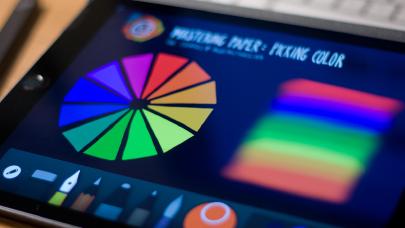
How to use Paper's color picker

Mastering Mix by FiftyThree
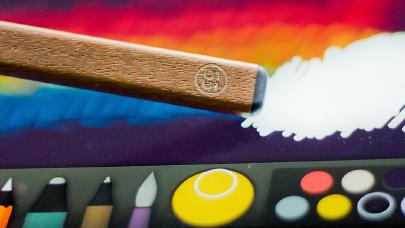
How to undo and erase in Paper
